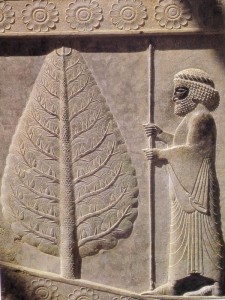By: Zia Fatherazi
Mithraism (the worship of the Persian Sun-God Mithra) was introduced to Rome during the first Century BC. It spread throughout the Empire and many Mithraic temples were built in Italy and other countries controlled by Rome.
The main festivity of Mithraism was the night of the winter solstice (longest night of the year), celebrating the assumed birth of Mithra, A popular festival which was observed throughout the Empire.
In 312, Constantine the Great invaded Italy and moved to Rome. Having had a vision of the Cross-against the sun, on the eve of his victory, he became a supporter of the Christianity. In 313, he issued the Edict of Milan granting freedom and equality of religions in the Empire. He also recommended that the Christians should celebrate Christ’s Birth on the same day as that of Mithra’s since they also considered Christ to be “Light of the World”. Some conservative Christians didn’t agree and the Orthodox Church like the Armenians celebrate only the 6th of January, the Epiphany day. In addition, Constantine changed the holy day of the week from the Judaic Sabbath to Sunday.
According to the Julian calendar (devised in 46 BC) at the time, the Vernal Equinox fell on March 25 and the Winter Solstice coincided with December 25. Christmas and Mithra’s birth were therefore celebrated on December 25. The first Christian Council held in Nicaea in 325 decided to set March 21 as the date for Vernal Equinox on the ground of calendar inaccuracies and its lag of 4 days. As a result the Winter Solstice was moved to December 21 but the Council didn’t change the date of Christmas.
During the following years, Christianity was declared as the official religion of the Empire and in 391 Pagan worship was prohibited. All Mithraic temples were destroyed and there remained not a single prayer book or document that could explain their rites, beliefs and traditions.
Very much like the Halloween celebrations in the United States, most Iranians celebrate the Winter Solstice on the evening of December 21 as the eve of Yaldâ (Birth) – a traditional festival without reference to its origin.
















